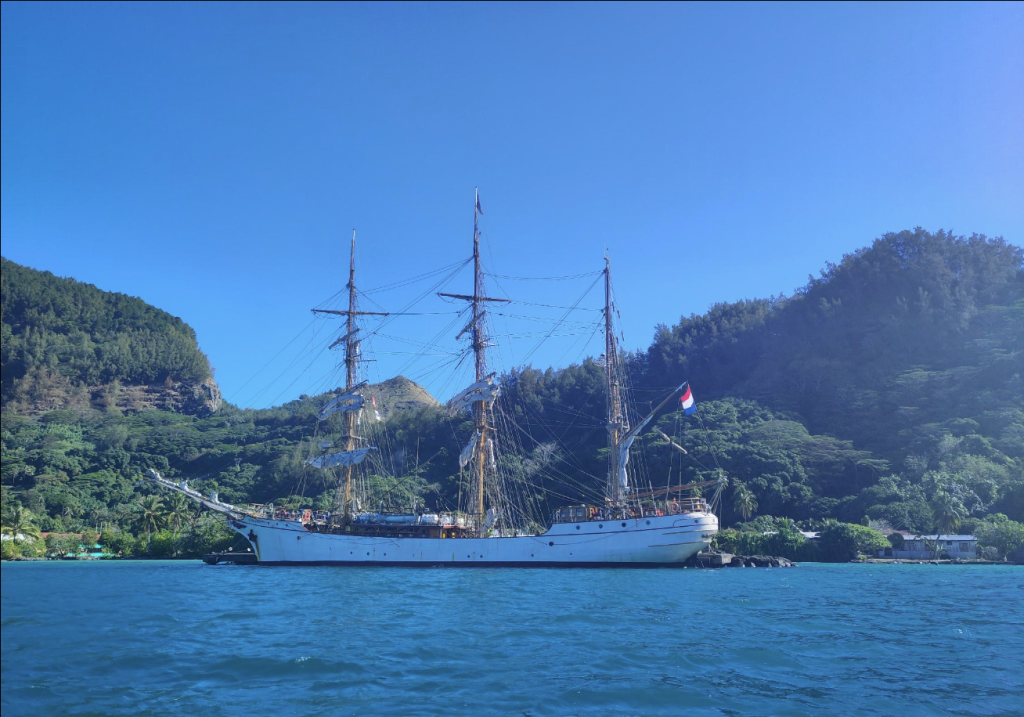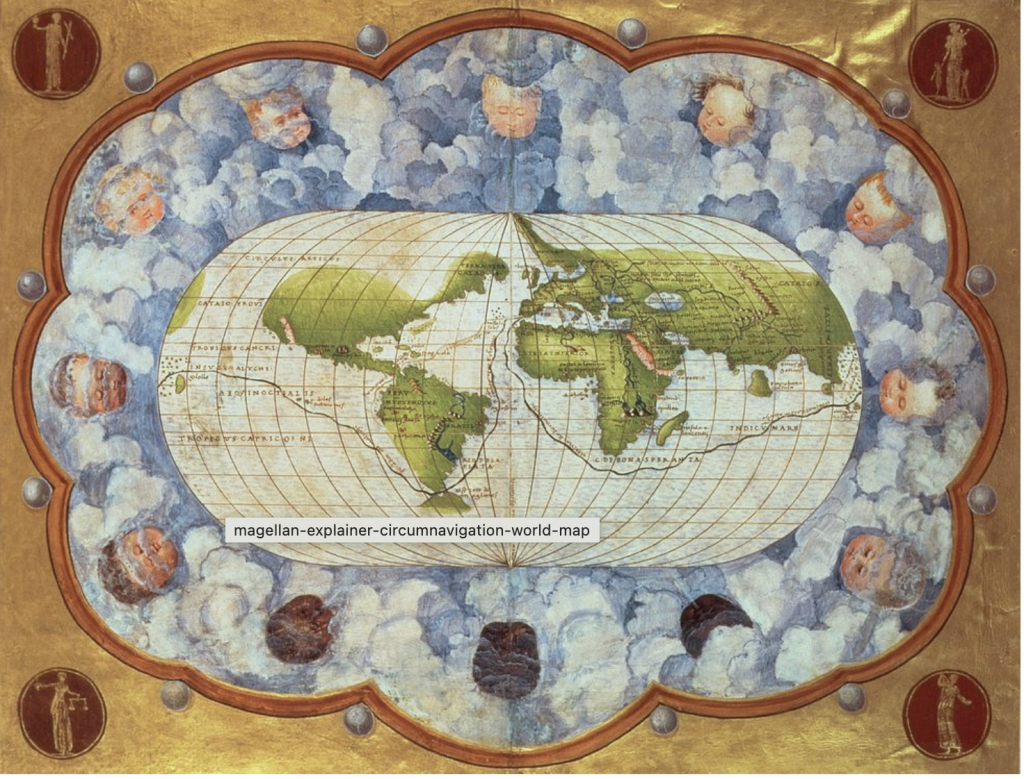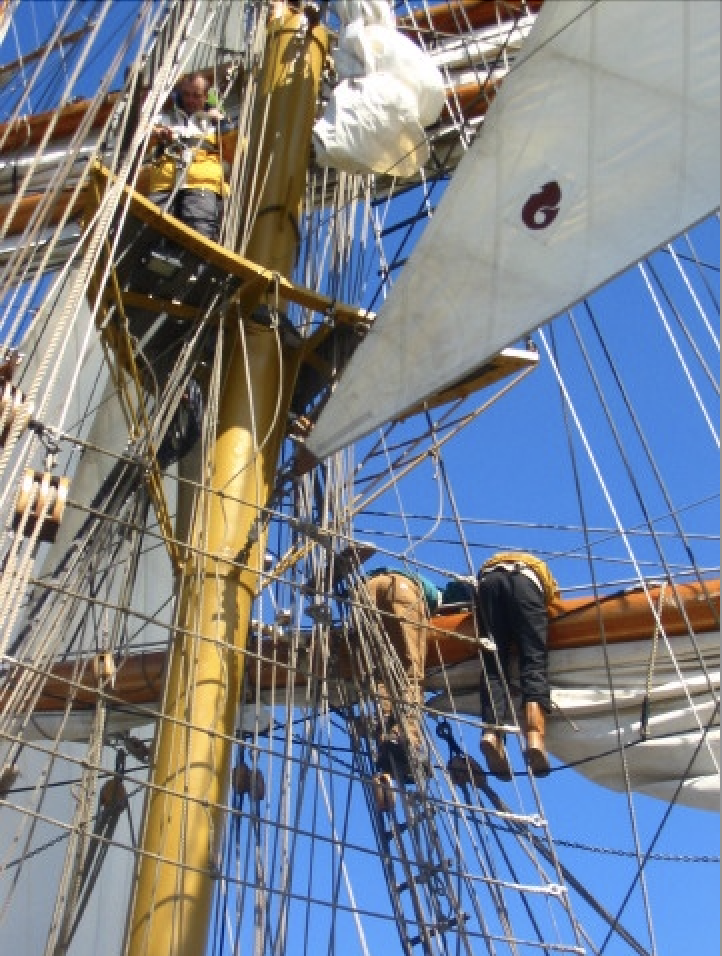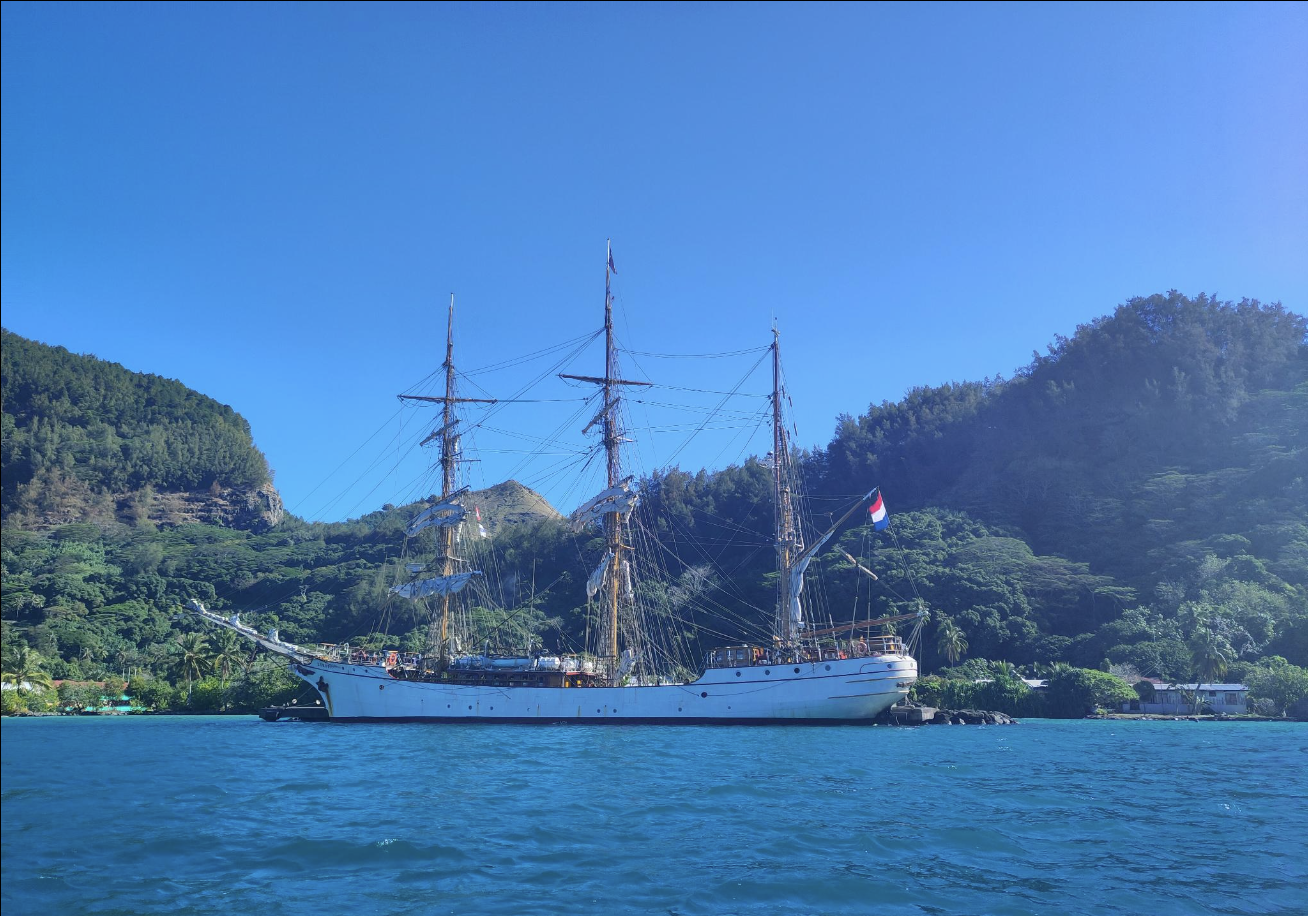One day before the European elections, we saw the three mast bark ‘Europa’ entering the bay. She moored at the only and small quai of the Gambier Islands.
For us, Peter and Inge, the Europa has a special place in our hearts because twenty years ago we married on this ship. We sailed a day with all our friends an family, went on anchor somewhere outside the territorial waters, and our friends married us.

.In the Southern summer, the Europa sails expeditions from Ushuaia (Patagonia) to Antartica. Last March she started sailing around the world, to celebrate that Magelhaes started this circumnavigation 400 years ago. Magelhaes never made it, he died in the Philippines and from there Juan Sebastian Elcano took over. (Funny thing: Elcano and his fellows were not the first humans who have rounded the world. That was Enrique, a man who was captured in the Philippines or Molucca and brought to Spain and served Magelhaes from there, on his voyage. So when they hit Philippines, Enrique has rounded the world as the first human).

The drawing of the circumnavigation that Magelhaen and Elcano made. Essence is the passages of two capes: Cape Horn and the Cape of Good Hope. This is what the Europa also will do. (courtesy Brown University).
A visit
Peter paid a visit to the Europa and talked with Tim, the Mate, and several guests. This big square rigger could make it all the way between the coral reefs up to this little quai. First, that is excellent seamanship, and second, it is beautiful for the guests.
The guests chose to cruise on this sailing ship, rather than a motor cruiser. Main reason is that they consider the sailing itself as an essential extra value. Especially the square rig is more romantic, like in the old days. Yes it goes slower, but they dont mind, or even see it as an extra value. The guests also participate in the watches and they find that a great opportunity. No experience is required for it and you can always feel safe with the professional crew on board.

.Sustainability and planning, the paradox
Talking sustainability, we all agree that it is a pity that the Europa needs diesel, but in general she is propelled by the sails. The crew and the guests like to sail, so they are set as soon as there is space to navigate under sail. So it is a sort of 80-20 figure: 80% is sailing, 20% is motoring.
The motoring could be less if the planning would be easier. But, time is money, the clients want to see more places if possible. That requires a strict planning, and so a certain minimum speed, if not by sail, then by engines. The planning is that strict, that the Europa has only 2 days time ashore here in Gambier.
I walked up the road with some guests. They were curious about the planning of Ya, about how many days the Ya would stay here.
“Planning?” I answered, “Well, we just are here and enjoy it. It is only the weather or the hurricane season that dictates the planning. We just hiked some beautiful trails here, and visited a pearl farm. And now we just made friends with people on the island so the Ya will stay a bit longer I guess. And there are such beautiful other spots around here that we want to visit.”
-”How many days you guess you would be here? 5 days? 15? 50 days?”
-”Well, it can easily become 50 days.”
One guest responds: “Wow, our stop is about 50 hours, to do the complete Gambier Island group. That is just enough time to take some good walks on the main island and drink a beer in a local tavern.”
Another guest concluded: “It is a strange paradox. On one hand, when we book, we want to see some islands, to get the maximum out of it. But on the other hand we would enjoy more of the trip if we travel slow. Then we sail more, and see more in the places. It would also be more sustainable I guess.”
I could confirm that: “Indeed. If you travel slow, it is easy to travel fossil free. And with the current technology of regeneration and electric cooking, that is even what Magelhaes or Elcano couldnot do.”

